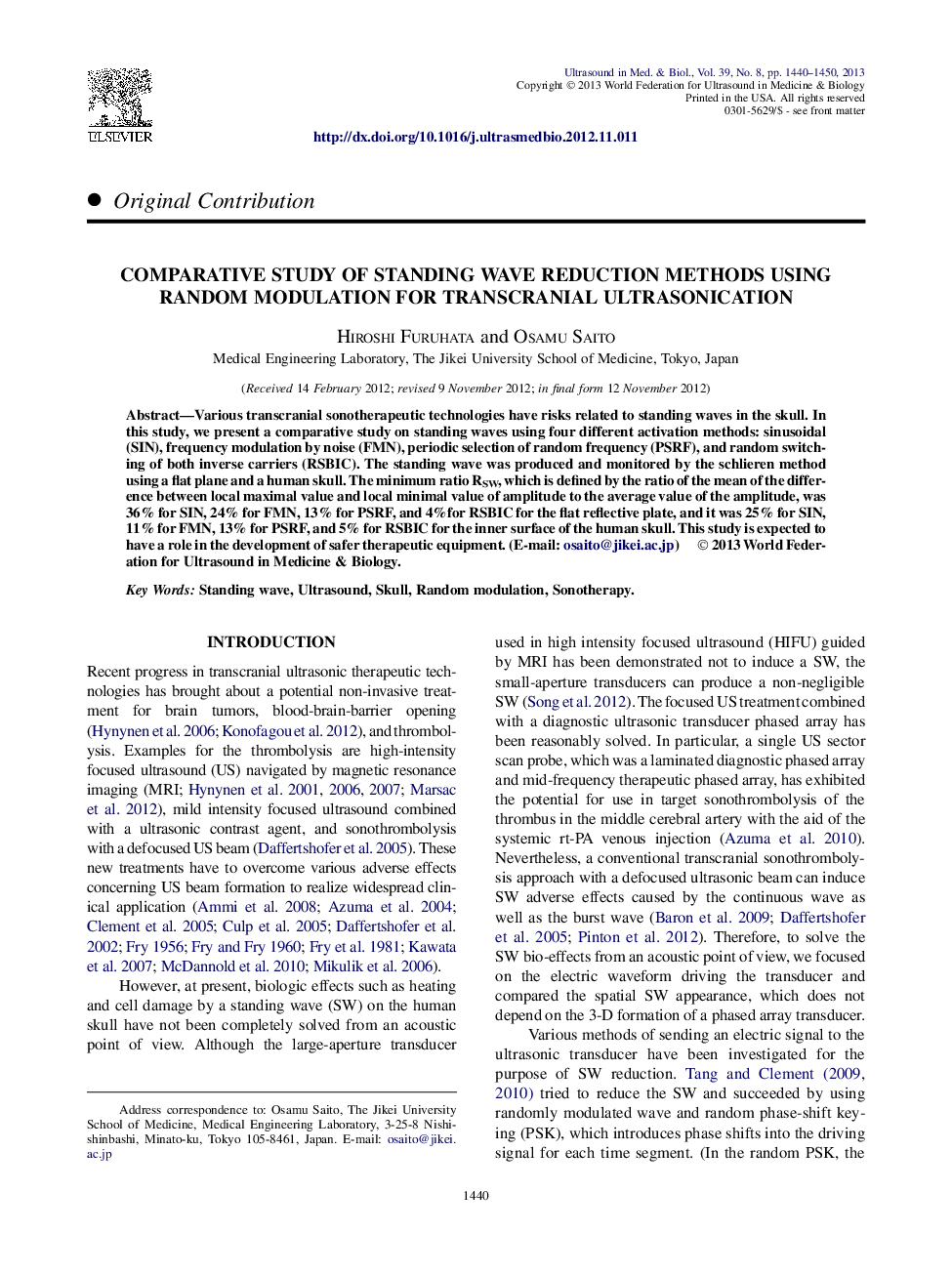| Article ID | Journal | Published Year | Pages | File Type |
|---|---|---|---|---|
| 10691494 | Ultrasound in Medicine & Biology | 2013 | 11 Pages |
Abstract
Various transcranial sonotherapeutic technologies have risks related to standing waves in the skull. In this study, we present a comparative study on standing waves using four different activation methods: sinusoidal (SIN), frequency modulation by noise (FMN), periodic selection of random frequency (PSRF), and random switching of both inverse carriers (RSBIC). The standing wave was produced and monitored by the schlieren method using a flat plane and a human skull. The minimum ratio RSW, which is defined by the ratio of the mean of the difference between local maximal value and local minimal value of amplitude to the average value of the amplitude, was 36% for SIN, 24% for FMN, 13% for PSRF, and 4%for RSBIC for the flat reflective plate, and it was 25% for SIN, 11% for FMN, 13% for PSRF, and 5% for RSBIC for the inner surface of the human skull. This study is expected to have a role in the development of safer therapeutic equipment.
Keywords
Related Topics
Physical Sciences and Engineering
Physics and Astronomy
Acoustics and Ultrasonics
Authors
Hiroshi Furuhata, Osamu Saito,
